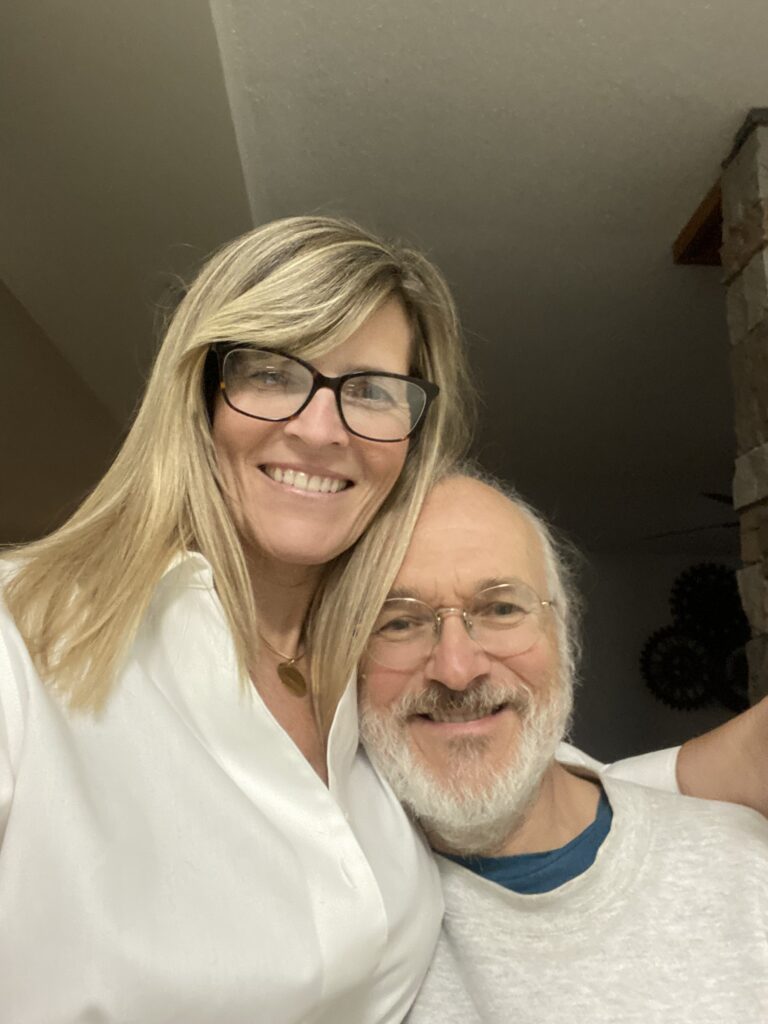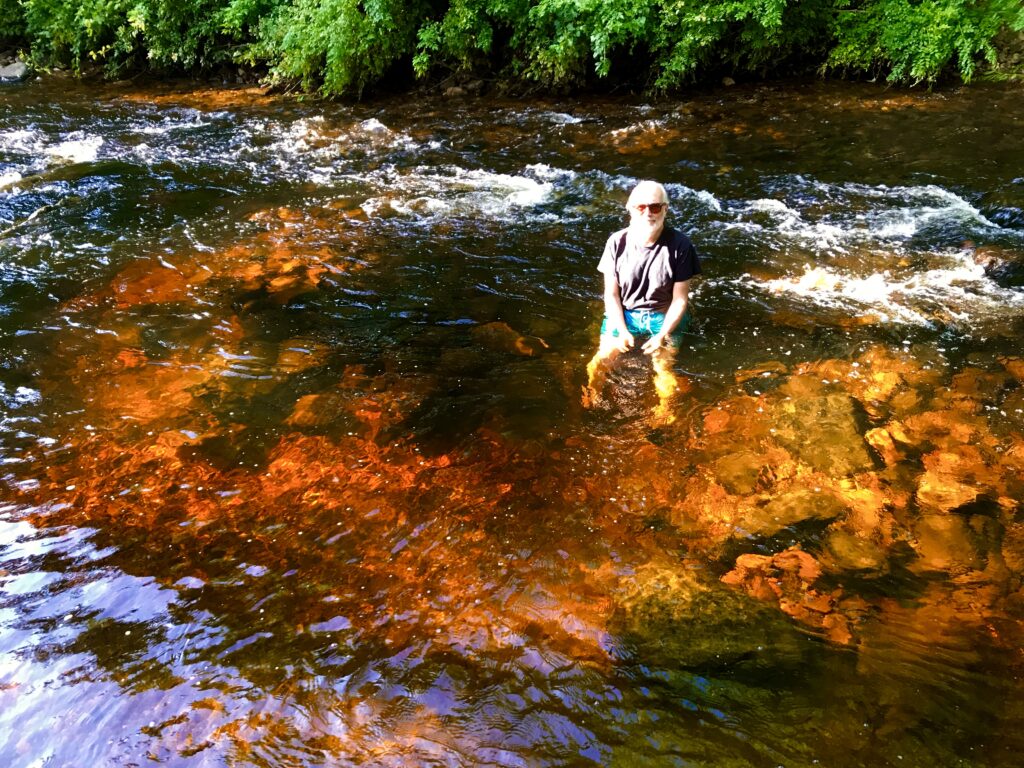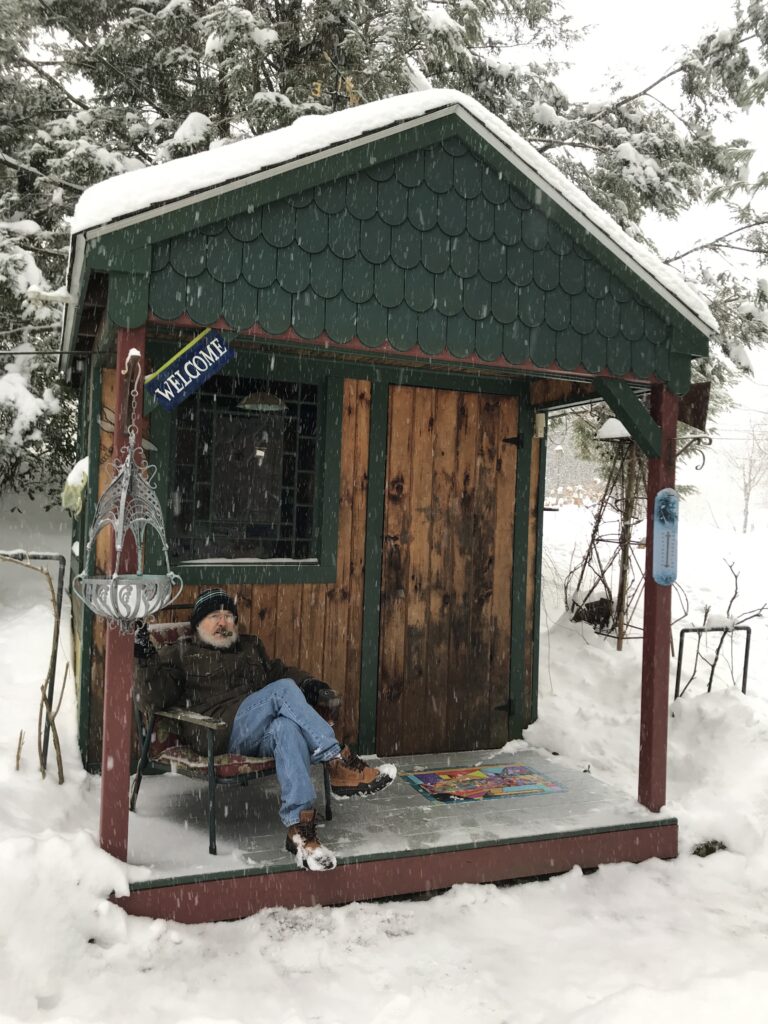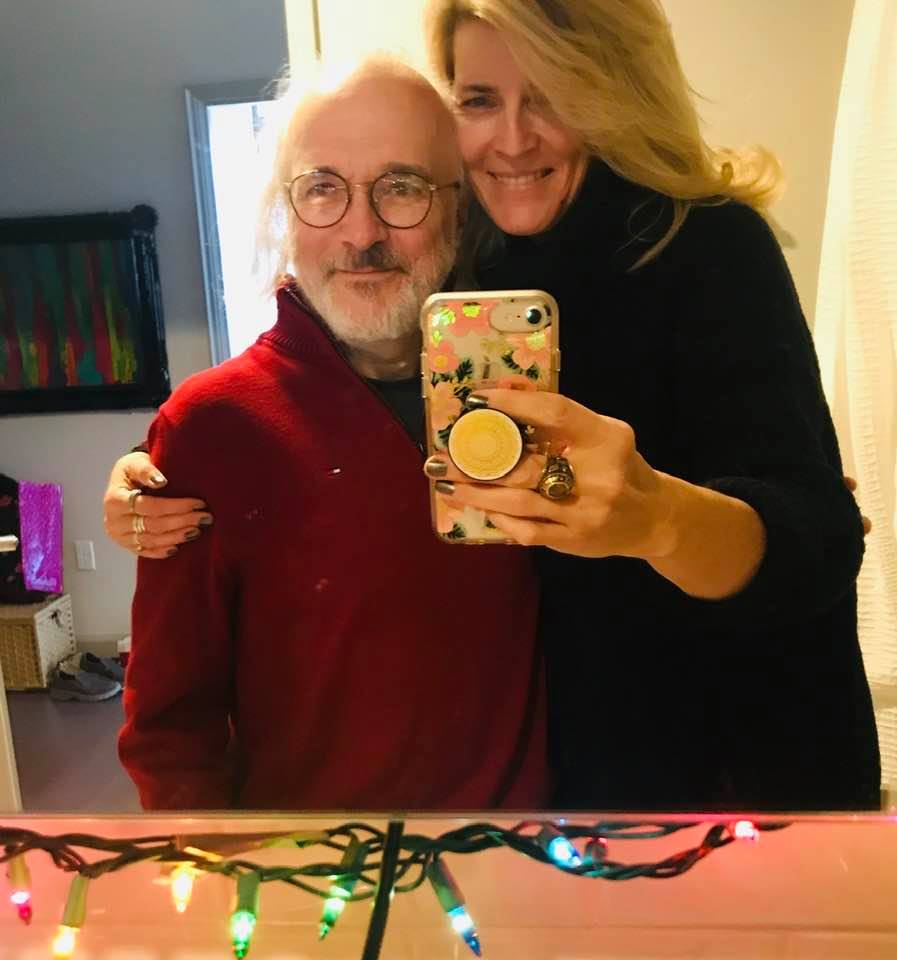By DAN VALENTI
PLANET VALENTI News and Commentary
(FORTRESS OF SOLITUDE, TUESDAY, OCT. 11, 2011) — With the important meeting set for tomorrow, 6:30 p.m., at Lenox Town Hall of PCBs, GE, and The Rest of the River, we present several related items to load the chamber. We urge everyone in Berkshire County to attend or to otherwise make your views known, as many have done on this website.
THE PLANET has received many thanks, from those on both sides (or should we say all sides) of the debate for focusing on what is arguably the singular issue of importance for Pittsfield and the county: What to do about the remainder of GE pollution that still infests the region.
Our first item comes courtesy of THE PLANET’s unofficials archivist, Ron Kitterman, former county commissioner. He presented us with a copy of an article published by the Boring Broadsheet not long after the city signed the Consent Agreement with GE. The headline is all you need to have:
ARLOS RAPS PCB AGREEMENT FOR OMITTING HUMAN STUDIES
Peter Arlos, the Aging Greek God, once again rains his prophecies upon the blighted land. From his heavenly Olympus, he shakes his head, laughs, and says, “Oh, will ye mortals ever learn”?
———————————————————-
WARD 4 REST OF RIVER GROUP PUSHES STATE PLAN FOR HOUSY
A few days ago, THE PLANET received an information packet sent by Bev Naughton on behalf of Dave Bubriski and C. Jeffrey Cook, who co-chair an organization called Ward 4 Rest of River Watch. Naugton writes: “Please note that [the group] believes that the position of the Commonwealth set forth in the attached letter to Susan Swirsky is the most appropriate [solution to dealing with the Housatonic River south of Pittsfield].
She attached about 40 pages of written documents, photos, charts, data, and analysis that the state Executive Office of Energy and Environmental Affairs sent to Susan Svirsky, project manager for EPA’s Rest of River program administered through the offices of the federal Environmental Protection Agency. Svirsky’s local office at the EPA is listed as c/o Weston Solutions, with an address of 10 Lyman Street, Pittsfield.
THE PLANET read through the information carefully, trying to absorb as much as possible. We present in digest form taken from the state’s letter to the EPA’s Svirsky the “key components of the Commonwealth’s proposed remedy.”
Remember, this is the remedy being advocated by Bubriski and Cook in the name of the Ward 4 Rest of River Watch. Keep in mind this is not THE PLANET making these statements, nor are they the representations of Ward 4 Rest of River Watch. These are from Richard K. Sullivan Jr. , state secretary, Executive Office of Environmental Affairs in his letterto Svirsky dated Jan. 31, 2011.
The River Watch group only subscribes to this position. When one Googles to learn more about the group, no website appears. It has a Facebook page with nothing on the “Info” page. There is no listing of members or any discussion of the group’s makeup, intentions, or funding. We mention this for those who will inevitably ask. Here are the key points of the state’s position on the river, bulleted from Sullivan’s letter to the EPA, using as many as Sullivan’s words as possible:
- Excavate Woods Pons to remove approximately 286,000 cubic yards of PCB-contaminated sediment. This excavation would eliminate up to 25% of the mass of PCBs in the entire rest of the river [Sullivan’s italics].
- At this time, perform no bank or river excavation and stabilization, because this work is not necessary to meet the human health goal identified by the EPA (due to the low concentrations of PCBs) and will inevitably cause severe and long-lasting destrucction of the Housatonic River ecosystem.
- In the floodplain, focus on locations totaling 57 acres[,] where there are significant PCB concentrations. Avoid excavation in the highly sensitive rare species habitats and use institutional controls to address public health risk.
- Transport all excavated material off-site, taking advantage of the nearby rail line. Under no circumstances should there be a hazardous waste landfill construction in Berkshire County for the excavated material. To do so plainly adds insult to injury.
- Perform ongoing monitoring of the success of past and future remediation efforts, ongoing consideration of new technologies as they become available, and reconsider final options for the remaining PCBs as more data is gathered.
- Immediately improve existing institutional controls to prevent human exposure, such as more plentiful fish advisory warnings, regular newspaper advertisements[,] and other informational outreach programs.
Essentially, that is the plan recommended by the state to the feds and advocated by Cook and Bubriski in the name of Ward 4 Rest of River Watch.
THE PLANET thanks Bev Naughton, Dave Bubriski, and Jeff Cook for getting this to us. As always, THE PLANET welcomes comments, discussion, and debate. We shall not comment on this plan one way of the other in the interests of not swaying the debate. We encourage a full hearing of this issue prior to, during, and after Wednesday’s crucial meeting at 6:30 p.m. in Lenox Town Hall.
———————————————-
WHAT IS A CONSENT AGREEMENT ‘REOPENER’ AND WHAT CAN IT DO?
THE PLANET wishes to remind people that there’s much more to be considered than the Rest of River, south of Pittsfield.
True, the Rest of the River would be enough to last a lifetime, but the matter of GE’s remediation with respect to the city of Pittsfield is not, should not, and cannot be finished, the Consent Decree notwithstanding. Silver Lake remains polluted, Hill 78 still towers over an elementary school, and unknown tons of undocumented toxins likely still befoul the air, land, and water in the city.
This stark reality provides the underlying reason why economic development in town has come to a halt. Until the situation is remedied, no amount of economic think tanks and economic development organizations — and there are plenty in town — will mean a thing, except to the six-figure executive directors who make out in the deal. Such economic development rah-rah groups have done little more in 25 years than cheerlead on the sidelines in a Game of Pretend, where there’s no problem with Pittsfield’s environment whatsoever, where everything Comes Up Roses. We know that is nonsense. So do executives of other companies who would otherwise be interested in moving to the Berkshires.
JUST FOR THE REOPENERS…
Many have the mistaken notion that the GE Consent Agreement, signed in late 1999, is chiseled in stone. It’s not. The agreement contains contract language that are called reopeners. In fact, the agreement has been reopened and modified about 10 times.
When GE brought two buildings of top-flight legal minds to play chess against Gerry Doyle representing the city of Pittsfield, the mismatch of the ages, GE OKd “repoeners,” which is contract language that can “set forth conditions by which the state [and other interested parties through the state] may require a property owner to pay for additional remediation. In essence, virtually no environmental cleanup project is ever unequivocally closed” ( quotes from an articled titled, “The Risks of Reopeners at Closed Remediation Sites,” 2009, Zurich American Insurance Company).
GE OKd the reopeners because:
(a) Such language is boilerplate in these kinds of agreements
(b) Moreover, and more importantly, they did so because “it is rare for contractual reopeners to be invoked …” (Zurich). It felt safe that, for the $10 million dollars tossed to Pittsfield to sign the agreement, no politician, official, or other GOB would dare explore the reopeners. Thusfar, GE has been right. It has essentially called Pittsfield’s bluff.
WHEN CAN A CONSENT AGREEMENT BE REOPENED?
According to Zurich, reopeners can be invoked under many circumstances. Parties to an agreement may demand “further remediation” if, for example, there is “immanent and substantial endangerment to the public health and environment” or if “previously undiscovered contamination” is found. Reopeners can be invoked, also, if new contamination is found or there is “a change in condition that exacerbates contamination,” or if maintenance conditions of the Consent Agreement are not maintained.
Also, Zurich notes, “states may reserve the right to reopen remediation projects if there are changes in laws that require cleanup to different levels than prior laws.” That “trigger” has enormous import for Pittsfield. It means that Pittsfield, though home rule petition to Boston, could legislate new health standards for a polluted town that would force GE to come back to the bargaining table.
All of these conditions for reopening the agreement depend on We The People applying pressure on politicians, legislators, and officials to do our bidding. As long as people remain bored, apathetic, and more interested in Lady Gaga’s Grammy gown than the very future of the city, Pittsfield will remain an toxic cesspool on a long fade-out, thanks to the company that “Brings Good Things to Life.”
————————————————————————
TOMORROW, THE PLANET LOOKS MORE CLOSELY AT SILVER LAKE, HILL 78, AND REPRINTS DAVE MARTINDALE’s MAGNUS OPUS POSTED ON THIS WEBSITE AS A COMMENT YESTERDAY. IT ANSWERS THE QUESTION OF HIS QUALIFICATIONS ON ALL THINGS GE/PCB/INDUSTRIAL TOXIN. YOU WILL SEE, HE IS ONE OF THE MOST QUALIFIED PEOPLE IN EXTANT. AND BECAUSE THE PLANET LIVES WHERE THE AIR IS PRINTINE AND THE FLOWERS ARE FOREVER BLOOMING, WE CAN SAY …
“OPEN THE WINDOW, AUNT MILLIE.”
LOVE TO ALL.















Wow Dan, thanks for this information! I can’t tell you how many people I know just shrug and say “What can you do?”.
A few years ago by chance I stopped at Tim Gray’s green house and recognized him as “the Housatonic River Guy”. We spoke about the PCB issue and I asked him about the bacteria that broke PCB’s down. He told me that the bacteria secreted a compound that broke down the PCB’s and that a European scientist named Otto ?????? found that a species of red worms produced the compound in greater quantity than the bacteria. This sounded like it had great promise, there was a web site mbut the whole thing fizzeled out. Does anyone have any info on what happened?
I’m curious as to how many people with significant financial interest in GE are involved in the former GE employees’ credit union and currently supporting the GOB’s that haven’t stood up to reopen the PCB issue in the consent: Doyle, Ruberto, et. al. Could that be how GE is getting around public sentiment – support and fund candidates through GFCU that protect GE’s interests while muddling the electorate with less important issues?
Nothing would shock me or surprise me about politics in the city of Pittsfield, particularly its underworkings.
It isn’t a shocking connection. Lots of people here are dependent on GE. Politics is like this everywhere, there are always mixed motives.
You should know that there has been a very extensive human health effects studies for communities along the Housatonic River by the government through the Agency for Toxic Substances and Disease Registry (ATSDR). It is available and easily accessible on-line at : http://www.mass.gov/Eeohhs2/docs/dph/environmental/investigations/ge_housatonic_pha_final_release_2008.pdf
This is as complete a study as could possibly have been conducted and they found no increase in adverse health effects in any of the communities. This is a finding we can all be thankful for.
THE PLANET is grateful to Jim Okun for sharing this.
DV, interesting document. Don’t you think that a side-by-side comparison is in order for the State’s recommendations vs the Fed’s recommendations? Shouldn’t we also be shown what Housatonic River Initiative’s recommendations are when compared side by side with these respective State and Fed plans?
From HRI’s website:
Goals
•No toxic waste dumps in the Berkshires
•Maximum removal of PCBs, including in Connecticut
•Maximum community involvement throughout the clean-up
•Openness to explore alternative technologies
•Flexibility to modify clean-up plans as needed.
Note that the State plan as expressed in the bullet points you publish above does not estimate how many cubic yards or acres of PCB-contaminated sediment will be allowed to remain nor the concentrations of PCB’s and other toxic chemicals that will exist in those remaining sediments.
RO
A noticeable omission. They also say that the remedial action proposed for Woods Pond will remove 25% of the mess from the entire rest of the river. If so, then what about the 75% that stays there? That, too, is not addressed.
Isn’t Bev Naughton a legal assistant at Jeff Cook’s law firm (partners who represented GE) and doesn’t she live in Cheshire not Ward 4?
To the post by Dave. B.
The worm company still exists and has been used in Europe. They should always be considered in the technology mix but their business end has not pushed enough in the US.
Two years ago we met Chris Young , a PHD in biochemistry that was working on a technique to clean PCBs. His company is the first we can identify that actually has completed three site clean ups in California. All approved by the California EPA ( this is the state agency). The sites were released for residential development when completed. This is a milestone.
We hosted Biotech Restorations and Genesis last spring of which both companies explained how we can use their approaches. We are bringing them back for another presentation. For many years GE had a research unit in Wood’s Pond trying to make PCBs break down. It never worked and the unit was dismantled.
Biotech knew that bacteria exists that when in a clean environment their function is to break the hydrogen/carbon bond in hydrocarbon molecules which are present in all soil. We have known for many years that the presence of chlorine is at the root of making PCBs resist breaking down in the environment. Biotech figured out that these bacteria produce a protein that triggers the bug to produce an enzyme that breaks down the HC molecule. In the presence of any chlorinated compound including PCB this ability is destroyed.
Biotech started the work of replicating the protein and were successful. When introducing the protein into the contaminated area the bugs ability to break the HC bond is restored and hence they start breaking down the PCBs and other chlorine contaminants. If you remember the worm company is using worm enzymes so it is similar to what Biotech
is doing. Enzymes seem to be the key. The difference is Biotech’s track record in the US which is needed to convince EPA and/or DEP to help us conduct pilot tests. The company has pledged their own money to start the process. EPA has sent green signals that we should precede.
Genesis showed us their dewatering unit which can make dredged soils ready for the Biotech technique. This done extremely fast. Old methods were to just let dredged spoils dewater by themselves which can take an extraordinary amount of time.
It is my belief that any clean up will not be low impact, even the states plan, but pilot testing in the floodplain and dredged river sediment might get us to better way to approach some of the clean up.
First of all most everyone knows I have spent my life trying to reverse the toxic mess GE left behind. My property is contaminated. Our river is contaminated. And lots of other GE toxic sites exist. I took the first independent samples in the river in 1976 when GE’s line was there is no contamination. In 1992 the Housatonic River Initiative formed and has been working for a comprehensive clean up for years. Many other groups agree on a clean river goal. We have never thought a clean river agenda is a radical notion but some seem to think this way.
PCBs were discovered in the food chain of the earth about 1966. They are one of the most pervasive toxic chemicals and reside in most humans and wildlife. Over several decades many world health organizations, independent scientists, and universities have studied them and consider them highly toxic. Thousands of peer reviewed scientific studies have been published. It is well documented that mothers pass doses of PCBs to their babies during breast feeding. Studies on wildlife have been equally alarming. Whales, polar bears, birds, fish, amphibians are a few being impacted. Nations around the world are cleaning PCBs up. Why? Because it is a prudent public and ecological health policy.
Just to add some local information to the mix. Mr. Martindale has worked for years to get as much of this toxic mess cleaned up as possible. His knowledge about PCBs is very valuable to having a competent discussion. In 1988 a study by Mass Dept of Public health was published pointing to very elevated levels of bladder cancer in Pittsfield. This was not internet data. Dave Gibbs, who Mr. Bubriski decided to slur on this blog, has spent decades helping neighbors whose families grew up on contaminated land get proper clean ups. He helped fight Hill78 and the clean up at Allendale School. His family has suffered from health issues all the while he was pushing for better clean ups.
To answer another post, Mr. Cook is a Board member of 1 Berkshire. After 1Berkshire denied in public that GE has funded this group, the Berkshire Record/Boston Globe printed stories to the contrary. Mr. Cook has a right to his opinion but lets be sure where the GE money goes.
GE has led the fight to make everyone believe that PCBs are safe and they shouldn’t be responsible for their mess. This has been the case on the Housatonic and Hudson Rivers. They fan the fire that no environmentalist could possibly be right about any environmental problem. “Don’t destroy the river to clean it”, they say. Take a ride to the East Side Café and look south at the bridge. This part of the river was dredged and banks dug up to remove the PCBs 10 years ago. It’s looking pretty good. Rip rap is almost covered over, insects on the river bottom have returned, fish are migrating back in, and native shrubs and trees have made impressive growth on the banks. The river wasn’t destroyed but cleaned of some of the highest levels of PCBs ever found in the world.
It has taken twenty years for many active citizens to get the EPA to order GE to clean the river. Here are positions put forth by many environmental groups. First there should be no more toxic PCB dumps. Hill 78 is the poster boy for this no brainer. GE has proposed over three dumps in Berkshire County. On the Hudson they are taking them to a
hazardous waste landfill down south. We have supported testing new technologies that destroy PCBs that could make the need for dumps obsolete. We hosted two companies last spring at a forum in Lenox. The same technologies have the potential to be used in the floodplain and possibly could minimize the clean up impact. We need some in -river pilot studies.
We believe that if we’re going to clean the river that removing the maximum amount of PCBs as possible should be the goal. It makes sense to us to do the best job. We are not dredging fans as one post seems to imply, but this is a construction project and it may be part of the decision. Instead of being fanatical we have looked at dredging and hosted forums on companies and their affiliates that have innovated low impact surgical dredging heads, with shrouds to minimize re-suspension. One company had low impact dewatering facilities that are measured in feet instead of acres. It doesn’t have to be huge clamshell dredges as GE wants you to believe. Innovative companies have come along way but better technology comes with cost. One of the most promising companies called Biotech Restorations have offered free testing to get the ball rolling. Google them up and read. We also think the decision needs flexibility to Modify Clean-up Plans as needed. The consent decree was written on stone.
GE’s most aggressive published option number eight says 2,250,000 cu. yards will need to be removed. The states says they would remove 25% of the PCB load with their plan. Does this mean 1,700,000 cu.feet are being ignored by the state? If GE’s numbers are right aren’t we leaving huge PCB levels upstream? The state wants to remove 286,000 cu. yds. from Wood’s Pond. PCBs left upstream will re-contaminate the pond during flood events. The state has stated the pond might have to be re-dredged someday. Public health goals will be met by putting up signs warning of the contamination. This was the plan in the 1980’s. We now will have more signs warning of the toxicity of the river. It’s starting to sound very strange. DEP, EPA, and GE present different numbers. Sit tight folks as the EPA has not even released their plan.
THE PLANET has long been aware of Tim Gray’s work. He was a periodic guest on “The Dan Valenti Show.” We have known him to be an honest and diligent man, a straight-shooter who bases his views on data and information, not emotion and PR. We thank Tim for this thorough and engaging presentation.
Here is some information about the post asking Dave M about GE lies.
In 1993 at a meeting at Lenox Town Hall (deja vu) GE and the Mass DEP told the audience that there was approx. 40,000 lbs. of PCB in the river. We didn’t trust that number, HRI member Mickey Friedman got a video interview with two high level GE engineers responsible for PCB usage at the plant. You know ….how much are we using and how much went down the drain. They based their figure on manufacturing loss and did not include any extraneous dumping GE workers have said took place. There figure from calculations was a million and a half pounds. OOPS!
GE has lied about there knowledge of health impacts since 1937. Here is an article posted by Dr. Peter Montague about this issue. We still have the Lenox meeting, GE worker interviews, and original article from this meeting at the Harvard School o Public Health..
Dr Peter Montague…
In 1937–just eight years after Swan Chemical began manufacturing PCBs in commercial quantities–the Harvard School of Public Health hosted a one-day meeting on the problem of “systemic effects” of certain chlorinated hydrocarbons including “chlorinated diphenyl” (an early name for PCBs).[8] The meeting was attended by representatives from Monsanto, General Electric, the U.S. Public Health Service, and the Halowax Corporation, among others.
Before World War I, the Halowax Corporation began manufacturing chlorinated naphthelenes as a coating for electric wire and companies like General Electric began using it. The president of Halowax, Sandford Brown, told the meeting that they had observed no problems in their workers until “the past 4 or 5 years… Then we come to the higher stages [greater number of chlorine atoms in the mixture], combined with chlorinated diphenyl and other products, and suddenly this problem is presented to us.”[8] By the mid-1930s, workers at Halowax and at GE, and even some of their customers, were breaking out with chloracne–small pimples with dark pigmentation of the exposed area, followed by blackheads and pustules. In 1936 three workers at the Halowax Company died, and Halowax then hired Harvard University researchers to expose rats to these chlorinated compounds, to see if they could discover the underlying cause. The Harvard researchers made “a number of estimates of chlorinated hydrocarbons in the air of different factories,” then designed experiments to expose rats to similar levels. They reported that “the chlorinated diphenyl is certainly capable of doing harm in very low concentrations and is probably the most dangerous [of the chlorinated hydrocarbons studied].”[8] And, they said, “These experiments leave no doubt as to the possibility of systemic effects from the chlorinated naphthalenes and chlorinated diphenyls.”[8]
From a brief report on the one-day conference, we can gather that problems caused by PCB exposures were serious and widely known. Mr. F.R. Kaimer, assistant manager of General Electric’s Wireworks at York, Pa., said, “It is only 1 1/2 years ago that we had in the neighborhood of 50 to 60 men afflicted with various degrees of this acne about which you all know. Eight or ten of them were very severely afflicted–horrible specimens as far as their skin conditions was concerned. One man died and the diagnosis may have attributed his death to halowax vapors, but we are not sure of that….”[8]
GE’s medical director, Dr. B. L. Vosburgh of Schenectady, N.Y., attended the meeting. He said, “About the time we were having so much trouble at our York factory some of our customers began complaining. We thought we were having a hysteria of halowax mania throughout the country.”
Monsanto Chemical Company was represented at the meeting by R. Emmett Kelly. Mr. Kelly told the meeting, “I can’t contribute anything to the laboratory studies, but there has been quite a little human experimentation in the last several years, especially at our plants where we have been manufacturing this chlorinated diphenyl.” He went on to describe the results of Monsanto’s human experiments: “A more or less extensive series of skin eruptions which we were never able to attribute as to cause, whether it was impurity in the benzene we were using or to the chlorinated diphenyl.”[8]
GE’s F.R. Kaimer described the HUMAN reaction of GE executives to the disfigurement and pain of GE workers exposed to PCBs: “[W]e had 50 other men in very bad condition as far as the acne was concerned. The first reaction that several of our executives had was to throw it out–get it out of our plant. They didn’t want anything like that for treating wire. But that was easily said but not so easily done. We might just as well have thrown our business to the four winds and said, ‘We’ll close up,’ because there was no substitute and there is none today in spite of all the efforts we have made through our own research laboratories to find one.”[8] And so GE executives–contrary to their personal ethics–reached a business decision to continue using PCBs.
[To be concluded next week.]
–Peter Montague, Ph.D.
===============
[1] Robert Risebrough and Virginia Brodine, “More Letters in the Wind,” in Sheldon Novick and Dorothy Cottrell, editors, OUR WORLD IN PERIL: AN ENVIRONMENT REVIEW (Greenwich, Conn.: Fawcett, 1971), pgs. 243-255.
[2] Soren Jensen, “Report of a New Chemical Hazard,” NEW SCIENTIST Vol. 32 (1966), pg. 612.
[3] Kristin Bryan Thomas and Theo Colborn, “Organochlorine Endocrine Disruptors in Human Tissue,” in Theo Colborn and Coralie Clement, editors, CHEMICALLY-INDUCED ALTERATIONS IN SEXUAL AND FUNCTIONAL DEVELOPMENT: THE WILDLIFE/HUMAN CONNECTION [Advances in Modern Environmental Toxicology Vol. XXI] (Princeton, N.J.: Princeton Scientific Publishing Co., [1992).] pgs. 342-343.
[4] See, for example, Robert L. DeLong and others, “Premature Births in California Sea Lions: Association With High Organochlorine Pollutant Residue Levels,” SCIENCE Vol. 181 (Sept. 21, 1973), pgs. 1168-1170; and Peter J. H. Reijnders, “Reproductive failure in common seals feeding on fish from polluted coastal waters,” NATURE Vol. 304 (Dec. 4, 1986), pgs. [456-457.]456-457.
[5] Shinsuke Tanabe, “PCB Problems in the Future: Foresight from Current Knowledge,” ENVIRONMENTAL POLLUTION Vol. 50 (1988), pgs. 5-28.
[6] Kristin Bryan Thomas and Theo Colborn, “Organochlorine Endocrine Disruptors in Human Tissue,” in Theo Colborn and Coralie Clement, editors, CHEMICALLY-INDUCED ALTERATIONS IN SEXUAL AND FUNCTIONAL DEVELOPMENT: THE WILDLIFE/HUMAN CONNECTION [Advances in Modern Environmental Toxicology Vol. XXI] (Princeton, N.J.: Princeton Scientific Publishing Co., [1992).] pgs. 365-394. For the comparison of U.S. breast-fed infants’ intake vs. World health Organization’s standard for adults, see pg. 385.
[7] Hugh A. Tilson and others, “Polychlorinated Biphenyls and the Developing Nervous System: Cross-Species Comparisons,” NEUROTOXICOLOGY AND TERATOLOGY Vol. 12 (1990), pgs. 239-248.
[8] Cecil K. Drinker and others, “The Problem of Possible Systemic Effects From Certain Chlorinated Hydrocarbons,” THE JOURNAL OF INDUSTRIAL HYGIENE AND TOXICOLOGY Vol. 19 (September, 1937), pgs. 283-311.
Tim Gray, who from GE will be in attendance at tomorrow’s Lenox meeting and should ANYTHING they say be given credence?
Dan…seems like you got the story wrong about Allen Harris being the bedate moderator of the State Rep Debate on WBRK….Looks like a former disgrunteled employee trying to start trouble.
HD
Thanks. Actually, I didn’t get the story wrong. Harris was pulled. FYI, I was never an employee there. I did my show on a contracted basis, free to come and go as I wanted. Looks like you got YOUR story wrong!
Planet, will the rubes ever learn that you can’t be bested in a game of wits.
GE will probably be there but they usually are sitting in the audience taking notes. Why expose themselves when the state will propose a sweet deal.
Tim G You got that right, they’ll be like the mogul whose got the cheshire cat smile sitting there saying nothing while his lawyers pick the pockets of someone in a biz deal, GE picked the pockets of Berks County especially Pittsfield. If there is any justice then the rest of river will be cleaned up and the consent agree. will be reopened so silver lake and hill 78 can be cleaned to pristine and the hill removed outta here.